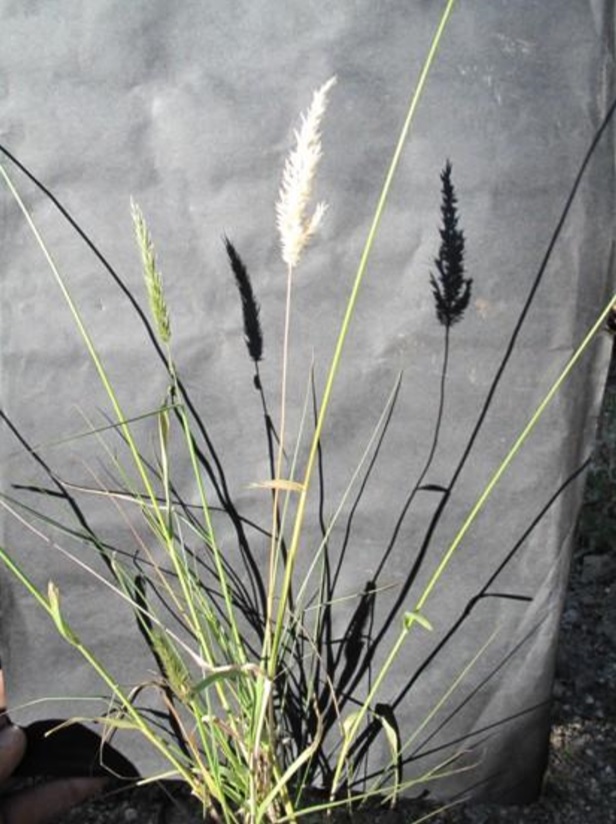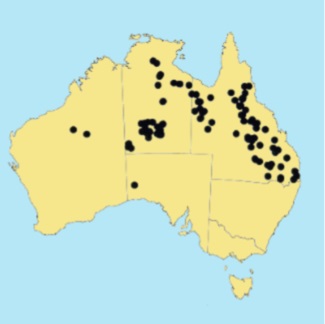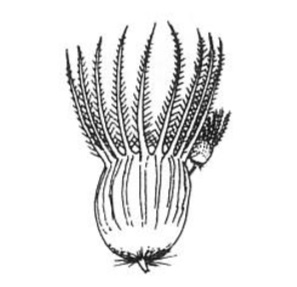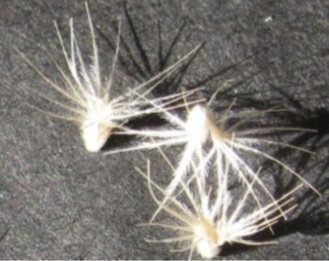Nineawn Grass – Enneapogon robustissimus
Name
Enneapogon is from the Greek ennea (nine) and pogon (beard), alluding to the nine plumose lemma awns; robustissimus from the Latin for most robust, the grass is very tall for the genus.
Description
There are only 16 species of Enneapogon in Australia; all are native. The genus is readily recognised by the nine-awned lemmas, with each spikelet having two or more florets. The spreading awns form an attractive circular arrangement.
Enneapogon robustissimus is a tufted, annual or short-lived perennial grass 30–100 cm tall. The inflorescence, 1.5–11 cm long, is a spicate panicle (the panicle branches are very short which makes the inflorescence appear like a spike).
Distribution and Habitat
This grass is endemic to Australia. It often grows on sandy soils near creeks and in gullies on rocky hills.
Ecological Notes
Many species of Enneapogon grow in central Australia where they provide food for budgerigars and parrots.
Propagation
Seeds only need to be stored for one month to overcome dormancy.
References
- Gardner CA (1952) Flora of Western Australia Vol. 1, Part 1. In ‘Gramineae’. (Government Printer:Perth)
- Jacobs SWL, Whalley RDB, Wheeler DJB (2008) ‘Grasses of New South Wales (Fourth Edition).’ (University of New England: Armidale)
- Sharp D, Simon BK (2002) AusGrass: grasses of Australia. CD-ROM, Version 1.0. (Australian Biological Resources Study: Canberra, and Environmental Protection Agency: Brisbane)
- Simon BK (1993) ‘A Key to Australian Grasses.’ (Qld Dept Primary Industries: Brisbane)
- Tothill JC, Hacker JB (1983) ‘The grasses of southern Queensland.’ (University of Queensland Press:St Lucia)
Related Pages
Nineawn Grass © C.Gardiner JCU Townsville 2012





